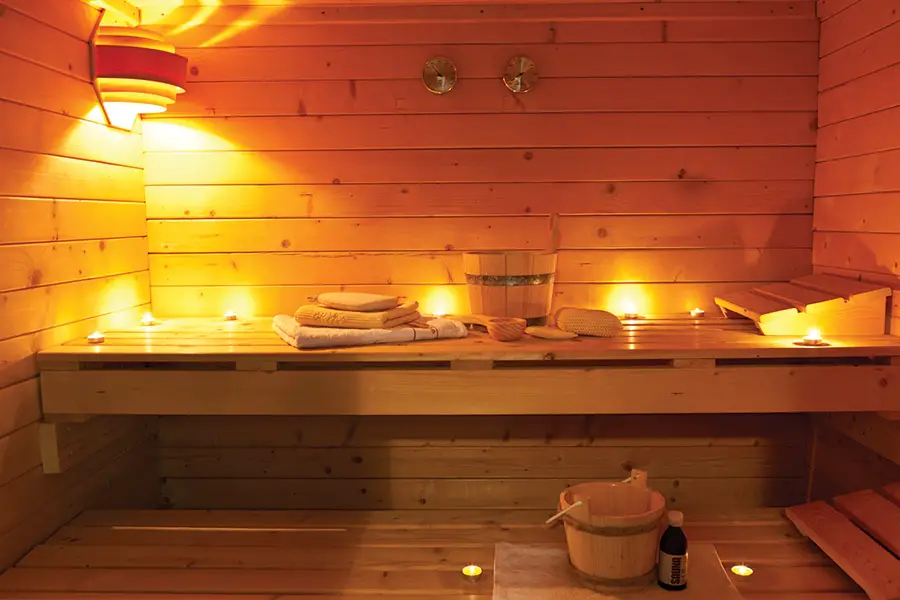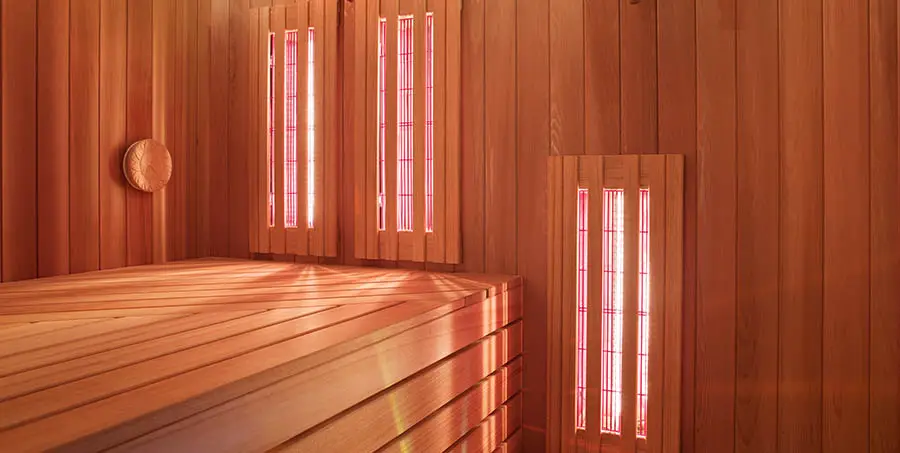Saunas are a well-known leisure and health-boosting activity that can now be found in most parts of the world. Their high temperatures and low humidity cause their occupants to sweat out of every pore while soothing tense muscles and other body aches. If appropriately used, saunas are not harmful. However, there have been many questions about their safety, like if they’re detrimental to the skin or can burn one’s skin.
Typical saunas operating within 150-190°F won’t burn your skin, however, the wood surfaces can sometimes get hotter than the air temperature and could mildly burn you. To make sure those surfaces aren’t hot enough to cause burns, get some water on them or sit on a towel.
The most common air temperature for a traditional sauna is 180°F, which is not enough to burn your skin. However, if you stick a metal pan in your oven at this temperature and touch it, it will burn you! So what gives? Metal is a much better heat conductor than air, which is why it burns you but the air at the same temperature doesn’t. The conduction is the same reason wood benches or metal jewelry can cause burns in the sauna. To learn about how a hot sauna might cause burns and how to avoid them, continue reading.
Typical Sauna Temperatures

The typical sauna air temperature is 185°F (85°C) but can range from 150-190°F (66-88°C). Some sauna enthusiasts can use the sauna even higher- beyond 200°F (93°C). In all temperature ranges, a traditional sauna is usually around 5-10% humidity, and to ensure the sauna is within its proper range, consumers will typically use a sauna hygrometer (on Amazon).
However, you can scoop out water from a bucket and splash it on the hot sauna rocks to increase the humidity temporarily. On the other hand, infrared and far-infrared saunas have much lower air temperatures than traditional saunas, ranging in around 120-140°F (49-60°C).
An infrared sauna directly heats your body with infrared radiation instead of heating the air in the room. The humidity levels in saunas are typically around 20-30% (around normal indoor conditions). Lastly, steam rooms, which use saturate the room with hot steam – just like the name implies – are usually kept around 110°F or 43°C (more on stream rooms in our guide).
However, they have 100% humidity which makes it feel much hotter. The reason is that moisture is a better heat conductor, and when you’re sweating, your body can’t cool itself through evaporative cooling – since the humidity is 100%, your sweat won’t evaporate to cool you.
Can a Hot Sauna Burn your Skin
It almost impossible for your skin to become burnt by the air in a sauna alone. It is simply not enough to cause burns to your skin. However, if solid objects get hot enough in the sauna, they might get hot enough to burn your skin.
For example, if the wooden bench gets as hot as the air temperature, it can be hot to touch and cause a burn. Burns for the wooden interior usually do not happen, but it is possible. To avoid any potential burns in a sauna, you can wet the bench with some water or sit on a towel.
Also, remove all jewelry from your body. Metal in jewelry is a great conductor of heat. Once it gets as hot as the air temperature in the sauna, the hot jewelry can cause a burn to your skin, so it’s definitely a good idea to take it off and store it in a safe place before you get in.
Additionally, there are other ways to get burnt in a sauna. In traditional saunas, a wood or gas-burning stove is used to heat sauna rocks, transferring their heat to the air. If you touch the sauna rocks or the furnace, it can quickly burn you as these are much hotter than 200°F (93°C).
Can Steam Rooms Burn Skin?
If you get close enough to the steam pump in a steam room, it can cause burns. As the steam leaves the pump, it’s a higher temperature before it spreads throughout the room. Also, the steam pump itself is very hot and would burn the skin if touched. Since steam pumps get so hot, they are usually kept behind protective cages, so no burn accidents occur.
Infrared Saunas Are The Least Likely to Cause Burns

Lastly, infrared (IR) saunas are the least likely to burn you, in fact, we have a guide discussing why in more detail. Since they do not heat the air or surfaces around you directly, they rarely get hot enough to cause burns. Air temperatures in IR saunas get as hot as 140°F (60°C), which is not hot enough to burn skin.
Surface temperatures are lower than this, too, protecting and preventing any possible burns to your skin, although, if you’re using an infrared sauna blanket, you should take care to ensure you don’t leave it on for too long.
Our favorite infrared sauna blanket as of right now is the HigherDOSE Sauna Blanket V3.
IR saunas use infrared radiation to heat you, which is the same type of warmth you get from lying in a sunspot. “Radiation” might sound bad or unhealthy, but it is not a harmful type of radiation like Gamma or X-ray radiation. The light spectrum is classified as radiation, and infrared and visible light are part of this spectrum.
How to Avoid Burns in a Sauna
Avoiding burns in saunas is quite simple. Use common sense and don’t touch anything that looks like it could be hot. Before you grab anything or sit on a surface, test it with the back of your hand first. Only touch the surface for a fraction of a second to determine if it is too hot for you to grab or sit on.
Avoid sitting directly on the wooden benches in a sauna. Instead, opt for sitting on a towel or other type of fabric barrier. If you don’t have a towel, you can splash some water on the wood surface to cool it before you plop down. To protect your feet, wear slippers or sandals so they don’t have to directly touch the potentially hot surfaces.
However, be kind to others and don’t wear your outdoor shoes into the sauna- try to keep it clean and be respectful. Avoid wearing jewelry into the sauna, as the metal can heat up and burn your skin. Also, take off your smartwatch and leave your earbuds behind. Not only will they break in the sauna, but they can also burn you.
Lastly, synthetic clothing, like stretching gym clothes, is not suited well for the hot environment of the sauna. If they get too hot, they can melt, stick to your skin and cause burns. Stick to cotton clothing and towels. Cotton is the best fabric for inside the sauna.


